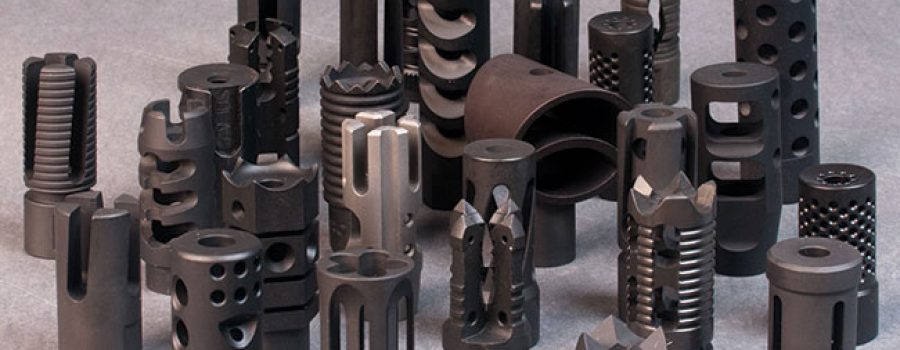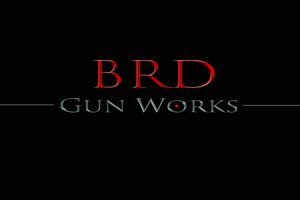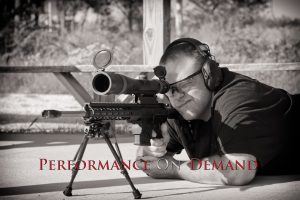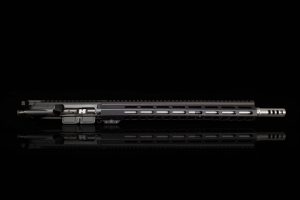Trends. Instagram guns. Gun bunnies. YouTube videos. Paid blowhards. All of these influence the consumer gun market. Most of the time with invalid and/or BS info. Worst yet is that most of these do not educate the shooter or gun owner, but influence them to purchase a product based upon “show”. Most individuals spend an inordinate amount of time and wads of cash on things that don’t make much of a difference in most circumstances. One great example of this is muzzle devices.
90% of individuals are best served with a flash hider. The A2 “Birdcage” variety is the most common, and one of the better performing ones. But the simple $13 bird cage just isn’t sexy enough for most enthusiasts out there, so they look for something more expensive and fancy.

Another example is the well performing basic, but more expensive Surefire Eliminator open tine flash hider. It’s cool looking. It looks like a War Comp but it doesn’t have the comp ports on it. And it’s also about $100.00 less than the War Comp.


The three prong flash hider is more than enough for most people. A couple things to note on three prong flash hiders is that they are available in open or closed tine versions. A downside to the open tine flash hider is that a tine can be bent inwards which could cause bullet strikes as the bullet passes through. This is a main reason why the military went away from open tine devices. If you happen to live in a state that bans flash hiders for being evil, then it’s completely understandable to go another direction. If you have some special use case where a different device might give you an edge, like competition or maybe a suppressor, then read on.

But, seriously, if you plan on putting a muzzle device on an unsuppressed defensive rifle, then stop right there and keep your birdcage or upgrade to a three tine flash hider.
Brakes vs Compensators
When it comes to a muzzle device, you’re choosing between flash hiders, muzzle brakes, muzzle compensators, and hybrid muzzle devices.
Most people use the terms compensator and brake interchangeably, but they’re really not the same thing. Their looks, operational principals, and how they mitigate recoil and what plane this is accomplished on are completely different.
In fact, companies even mix up phrases. For instance, Precision Armament’s AFAB (which stands for Advanced Flash Arresting Brake) is actually designed to be a compensator. On the other hand, their M4-72 Severe Duty Compensator is actually a brake.


Muzzle Brakes

Strictly speaking, muzzle brakes vent expanding gasses in a way that reduces felt recoil to the shooters. This is accomplished by redirecting the gasses out to the sides and rearward. Typically at around a 15 degree angle. When a brake does this it is effectively mitigating recoil in the horizontal plane in relationship to the gun. By doing this it has the advantage of reducing shooter fatigue, especially with larger calibers.
The amount of recoil mitigation can be greatly influenced by the design of the brake. Port size, shape, rearward sweep, etc. The design and pattern directs expanding gasses back towards the shooter and “pushes” the rifle forward as it fires. This design counters the momentum from a projectile exiting the barrel. It should also be noted that a brake’s effectiveness is also attributed to the ammunition used, but this is not as much of an influence like it is with a compensator.

There is always a price for admission. A majority of the time there are negatives to positives. What’s the negative on a muzzle brake? The monstrous muzzle blast and concussion. This is even more of a factor on SBR’s and short barrel AR pistols. The report and concussion from a braked rifle is usually far louder than a rifle with no muzzle device at all. Some brakes that I have used and tested have generated enough rearward concussion on a 10.5” 5.56 NATO AR pistol that I greatly feel the effects of it.
An instructor that I know calls them “loudeners.” Generally speaking, if you show up to any training course with one of these things on your rifle, SBR, or AR pistol then your classmates are going to be pissed at you. Especially when you’re doing barricade work, inside of a shoot house, or when in other confined areas.
Compensators

On the other hand, muzzle compensators do something a little different.
Instead of strictly reducing felt recoil, they vent gasses in a pattern that react against the rise of the barrel or vent to keep the muzzle stable. This is otherwise known as reducing “muzzle jump.” This is accomplished by typically venting the spent gasses out the top (and sometimes bottom corners) of the muzzle device which then acts with opposing force to the barrel in the vertical plane. Some compensators which are known as linear comps will vent the gas forward producing reaction forces on the horizontal plane.

There are other comps on the market that vent gasses in a circular motion around the muzzle device. The Precision Armament AFAB that I previously mentioned is one of these. The Surefire War Comp uses the same principle combined with a three tine flash hider.
It should be noted that there is a muzzle device on the market that uses bilateral forces from compensator ports to aid in recoil mitigation and quicker time back on target. The SOLGW NOX muzzle device utilizes three comp ports on the top of the muzzle device as well as three comp ports on one side of the device. The default is to have three ports on the right side of the muzzle device as it is designed for right handed shooters. SOLGW says that left handed muzzle devices can be ordered per request. What’s the advantages of this device? Well I’ve put some time in with one and the jury is still out, but in comparison to other comps that I’ve used it does seem to keep the gun and the dot flatter during recoil. As a right handed shooter, a red dot AR will typically recoil upwards and to the right. It is stated by SOLGW that the three side ports are there to aid in directing the gun into the shooter’s shoulder on the horizontal plane, as well as the three top ports working in the vertical plane to reduce muzzle rise. From my use and experiences so far, I would say that the NOX design is achieving what SOLGW states.



Compensators are designed to help with faster follow up shots or provide a better chance to spot shots. But what is the price of admission with these? Well, compensators are also associated with increased noise and concussion, but usually less than with dedicated brakes since the gasses more evenly vent around the device. An exception to this would be comps that strictly vent large amounts of gas out of the top. Depending upon a lot of factors such as caliber, barrel length, and ammunition to name a few, these styles can displace large amounts of gas and debris which may be distracting to a shooter. While this is not something that I have experienced, I have had other shooters experience this in my presence. Especially on large caliber short barreled guns such as a 10.5” 450 Bushmaster AR pistol.
One thing to note is that compensators very much rely upon gas pressure to be effective. Therefore there are some calibers that may not benefit from them. One such example are 9mm USPSA PPC comp guns. It has been my experiences, as well as that of others, that unless you run slower powders or high charge weights that you will not generate enough pressure from the 9mm in a 16” barrel to make a compensator work. Or work effectively. Now there are some specialized ways around this but that is not for this article.
Hybrid Devices

The AR-15, and particularly the .223, doesn’t have heavy recoil. Because of that, there is a market for hybrid devices that try to do a little of everything. A hybrid device typically consists of a muzzle brake and compensator. While some will even try to reduce muzzle flash.
The idea behind a hybrid is to reduce recoil, hold the muzzle stable, and possibly to try to reduce flash. In general, as is usually the case, these hybrid compensators are outperformed by devices designed to do only one of those things well. But this is not always the case.
An example of a hybrid muzzle device is the VG6 Gamma. VG6 produces a number of hybrid style devices in varying lengths and designs. The Epsilon is another popular one. They produce devices for 5.56, 6.5 Grendel, 9mm, and others.
As with the other devices, there is a price of admission with the hybrid muzzle device. That is sound and concussion. Especially on short barrel AR’s.
Comparisons
There are a lot of reviews out there comparing muzzle devices. In my view, one of the failings in these articles is that they usually only measure a single aspect, such as rearward recoil force. They don’t take into account the vertical plane. While others will also account for reticle movement, dot movement, and how these settle or return post recoil impulse.
In most of these types of tests, the pure muzzle brakes perform the best. The compensators compete with the hybrids and both perform somewhere in the middle of the pack, and flash hiders perform the worst. A proper comparison would look at both the rearward recoil forces as well as muzzle deflection.
A good suggestion would be to get trigger time on devices that interest you. If at all possible it should be on rifles that are similar to yours in regards to build and accessories.
Real World Uses
In the real world, there’s really only three reasons to use some of these things.
First, a lot of suppressor companies use brakes and comps as attachment devices for their suppressors. They are using the steel of the muzzle device as a kind of sacrificial first baffle in the suppressor’s function. These devices have a tendency to direct the gasses more to the outer part of the blast chamber. The idea behind this is to extend the life of the suppressor by reducing blast erosion to the baffles. Muzzle devices, after all, are relatively cheap and easy to replace compared to the internals of a suppressor.
Secondly, brakes and comps have their uses for shooting competitions. At high levels, competitors use any possible edge they can find to shoot faster and more accurately. These devices help with that. They also help competitors in the PRS and long range rifle games by reducing muzzle jump which helps them to call their splashes and hits, and aids in follow up shots if required.
Lastly, some of the hybrid style muzzle devices will aid an individual in making 13.7” or 14.5” barrels 16” legal with a pin and weld. Two of these that come to mind immediately are the SOLGW NOX and the Surefire War Comp. These are also QD attachments for suppressors as well. Quite a universal item, and from my experiences they are both effective at what they are designed to do.
Wrapping Up
My simple advice is that most people are better off with a flash hider of some sort. The A2 birdcage does a fine job, but there are other good ones on the market. Of course, state laws are a factor on that one.
Brakes and Comps have their purposes, but they are almost entirely designed around either competition settings or suppressed fire. There are training schools, as well as some indoor ranges, that outright ban them from use.
If you’re running a defensive or duty rifle and are thinking of running a brake or a comp I would highly suggest that you think twice about it. The sound and concussion from these devices is tremendous. Especially on shorter barrels which is the normal these days. And one thing that I didn’t touch on is muzzle blast in the dark. Of course this is dependent upon a few factors, but from those that I’ve used or tested, they have a lot of blast.
Imagine being in a stack and a fellow officer touches of some rounds. Most likely you’re going to be in tight quarters if you’re stacked. The noise will cause hearing loss for sure, and most likely permanent hearing damage. The concussion from the blast is going to be big and very well could impact a fellow officer in the stack. I’ve seen barricades rock due to shots fired using a brake. I’ve seen walls charred black from the gasses and debris from the round going off.
You not an officer you say? Imagine touching off a few rounds in your home during a defensive encounter. Or touching off some rounds while inside of a vehicle. Again, you most likely will not have hearing protection on. Hallways, rooms, interior of a vehicle, etc. are all echo chambers and that muzzle report will be loud.
Do you want to get an idea of what this would be like? Get a couple of friends and go to an indoor range. Go all the way to one side of the range and touch some rounds off by yourself. Then have your buddies join in at the same time. Let me know what that’s like for ya. I already know.
What are your thoughts on muzzle devices?
BRD Gun Works~ Performance you can afford when you can’t afford failure



